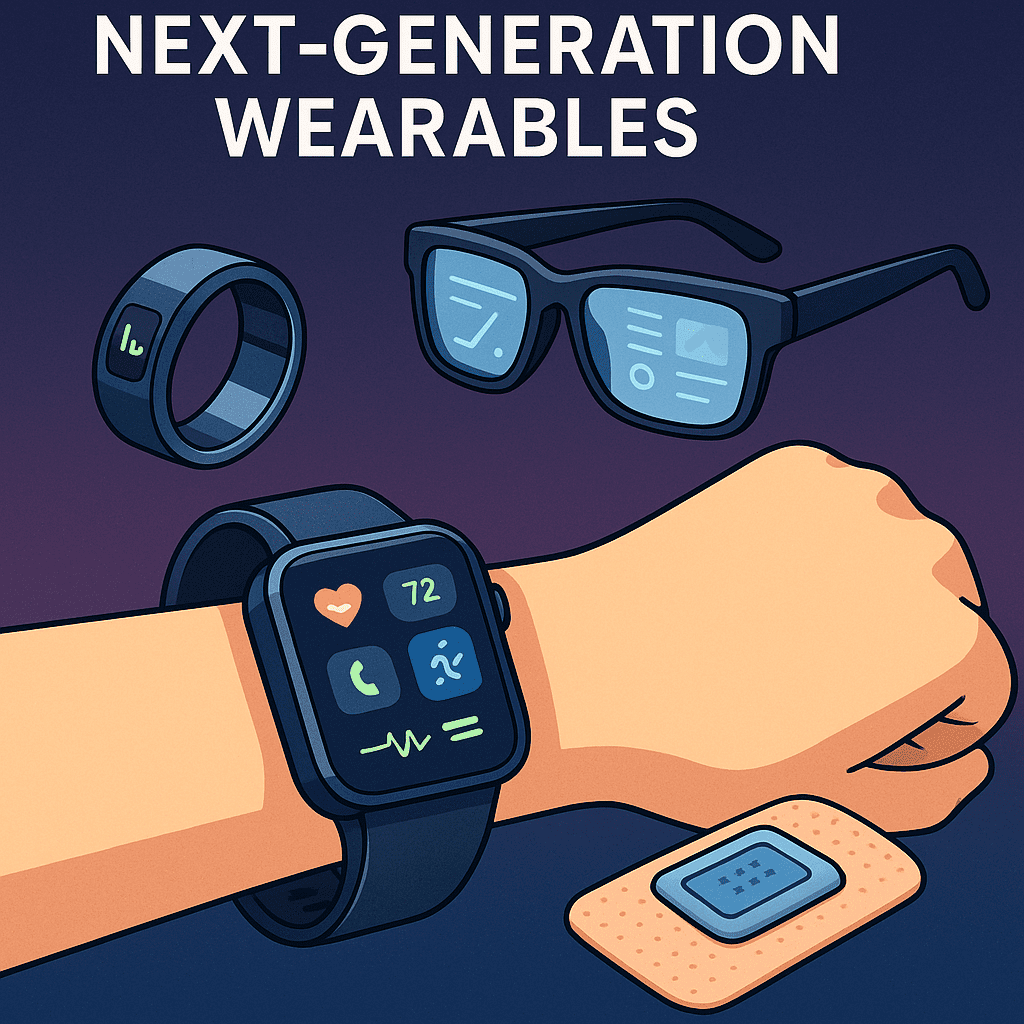Introduction:
wearable technology has evolved far beyond basic fitness trackers. Today, next-generation wearables integrate AI, advanced health monitoring, and seamless connectivity, transforming how we interact with technology daily. From smartwatches that detect irregular heartbeats to AR glasses enhancing productivity, these devices are becoming indispensable.
In this post, we’ll explore the latest innovations, benefits, and future trends in next-generation wearables, helping you understand why they are the future of personal tech.
1- What Are Next-Generation Wearables?:
Next-generation wearables are advanced versions of traditional smart devices, equipped with cutting-edge features like:
a- AI and machine learning for personalized insights
b- Enhanced health monitoring (ECG, blood oxygen, sleep tracking)
c- Extended battery life with energy-efficient processors
d- Seamless connectivity (5G, Wi-Fi 6, Bluetooth 5.0)
e- Flexible and durable designs (foldable screens, eco-friendly materials)
2- Key Innovations in Next-Gen Wearables:
A- Health and Wellness Monitoring
Modern wearables now include:
ECG & Blood Pressure Sensors (e.g., Apple Watch, Samsung Galaxy Watch)
Glucose Monitoring (non-invasive tech in development)
Mental Health Tracking (stress and anxiety detection via heart rate variability)
B- AI-Powered Personalization
Voice assistants (Siri, Google Assistant, Alexa)
Predictive analytics (suggesting workouts, reminders based on habits)
Adaptive displays (adjusting brightness, notifications based on context)
C- Augmented Reality (AR) Glasses
Smart glasses (like Meta Ray-Ban, Google Glass Enterprise)
Real-time translations & navigation
Hands-free productivity for professionals
D- Sustainable and Flexible Designs
Solar-powered wearables
Biodegradable materials
Stretchable electronics for better comfort
3- Benefits of Next-Generation Wearables:
a- Improved Health Management: Early detection of medical conditions.
b- Enhanced Productivity: Hands-free notifications, AR-assisted tasks.
c- Personalized Experiences: AI-driven recommendations.
d- Seamless Connectivity: Faster data transfer with 5G and Wi-Fi 6.
e- Fashion & Functionality: Stylish designs that blend with everyday wear.
4- Future Trends in Wearable Technology:
a- Brain-Computer Interfaces (BCIs): Devices controlled by thoughts.
b- Smart Clothing: Embedded sensors in fabrics for health tracking.
c- Self-Charging Wearables: Kinetic and thermal energy harvesting.
d- Advanced Biometrics: DNA analysis via wearable patches.
Conclusion:
Next-generation wearables are revolutionizing personal technology, offering smarter health monitoring, AI-driven insights, and seamless connectivity. As innovations like AR glasses and BCIs emerge, these devices will become even more integrated into our daily lives.
FAQs:
Q1: What makes next-generation wearables different from older models?
A: They feature AI, advanced health sensors, longer battery life, and better connectivity.
Q2: Are next-gen wearables secure and private?
A: Most use encryption, but users should review privacy settings to protect data.
Q3: Which is the best next-gen wearable for health tracking?
A: The Apple Watch Series 9 and Samsung Galaxy Watch 6 are top choices for comprehensive health monitoring.
Q4: Will smart clothing replace traditional wearables?
A: Not entirely, but smart fabrics will complement devices like smartwatches.
Q5: How long do next-gen wearables last on a single charge?
A: Depending on usage, some last 7-14 days (e.g., Garmin watches), while others need daily charging (e.g., Apple Watch).

A pattern of the Next Generation-Generation wearable Devices


